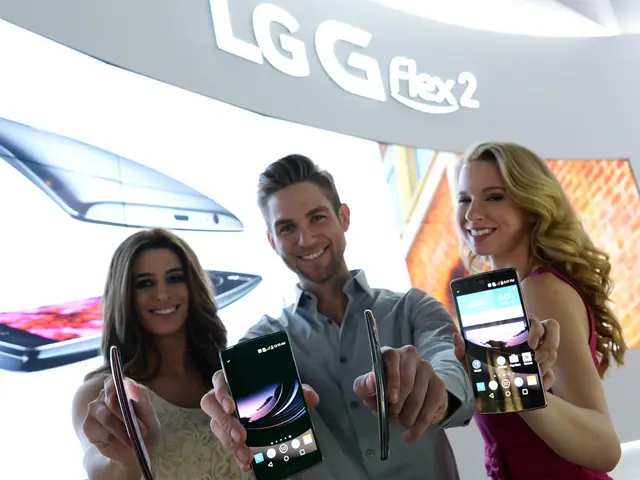Screens Ain't Cutting It: Auto Makers Switch Back to Physical Buttons in EV Models
"Return of Physical Interaction": New Electric Cars Feature Traditional Buttons to Alleviate Screen Overload
As electric vehicles (EVs) become more prevalent, automakers are starting to reverse previous design decisions and reintroduce physical buttons and knobs. This shift is influenced by several reasons, including consumer preferences, safety concerns, and a hybrid design approach.
In the early days of EVs, manufacturers sought to cut costs and bring down prices by opting for digital dashboards and minimal buttons, leveraging touchscreens for multiple functionalities. However, it seems that those days are now behind us.
Ed Kim, a veteran automotive analyst at AutoPacific, notes that "buttons cost money, and cost is a major issue because batteries are so expensive." But as it turns out, the desire for a simpler, more intuitive driving experience often outweighs cost concerns.
Many drivers have expressed a strong preference for tactile controls over touchscreens, particularly for essential functions like climate control and audio volume. This preference stems from a desire for simplicity and ease of use.
Moreover, safety concerns associated with touchscreens have become a significant factor in the shift back to physical buttons. Touchscreens can be distracting, especially when driving at high speeds or in emergency situations. Physical buttons allow drivers to adjust settings without taking their eyes off the road, enhancing safety.
In response to this demand and to provide a balanced approach, some manufacturers are adopting a hybrid layout. This means combining touchscreens for navigation and entertainment with physical buttons for critical controls, such as climate and audio settings.
The reintroduction of physical buttons has a positive impact on consumer satisfaction. According to various sources, drivers appreciate the ease of use and immediacy of physical controls, which can reduce frustration and improve the overall driving experience.
Additionally, the shift back to physical controls caters to users' safety concerns by reducing the need for interaction with touchscreens while driving, contributing to safer driving practices.
Manufacturers' responsiveness to customer feedback is another significant factor. Many customers found touchscreens less intuitive and more distracting and expressed these concerns. This responsiveness to feedback is essential in increasing customer satisfaction and loyalty.
Porsche is already reversing course, adding back switches in its latest Cayenne model. Ivo van Hulten, Porsche's director of user experience, admitted that the company may have pushed the no-button trend too far with the Taycan.
As we move forward, it remains to be seen whether the return of physical buttons and knobs will help close the gap between market leaders like Tesla and the competition. However, it is clear that automakers are now well-aware of consumers' desire for a more user-friendly and safer driving experience.
- As the trend toward electric vehicles continues, lifestyle preferences suggest a growing demand for simpler, more intuitive controls, such as physical buttons and knobs, even amidst ongoing discussions about cost-cutting in technology.
- In response to customer feedback and safety concerns, entertainment providers may consider implementing hybrid designs, blending touchscreen technology for navigation and entertainment with physical buttons for essential functions, creating a balance that prioritizes both user experience and safety in sports and daily life.
- Furthermore, the reintroduction of tactile controls in business environments could lead to increased consumer satisfaction and loyalty, as users appreciate the immediacy and ease of use, potentially altering the competitive landscape by appealing to a wider audience seeking a safer and more user-friendly tech experience.








